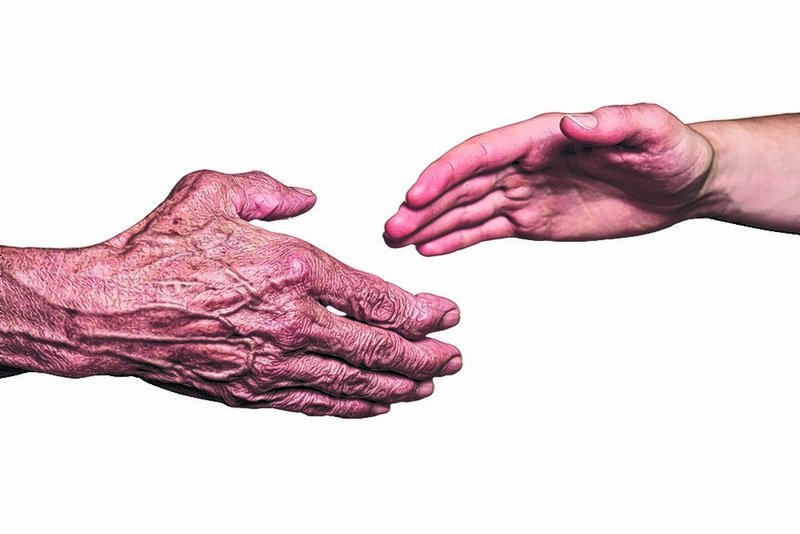WASHINGTON – The wealth gap between younger and older Americans has stretched to the widest on record, worsened by a prolonged economic downturn that has wiped out job opportunities for young adults and saddled them with housing and college debt.
The typical U.S. household headed by a person age 65 or older has a net worth 47 times greater than a household headed by someone under 35, according to an analysis of census data released today.
While people typically accumulate assets as they age, this wealth gap is now more than double what it was in 2005 and nearly five times the 10-to-1 disparity a quarter-century ago, after adjusting for inflation.
The analysis reflects the impact of the economic downturn, which has hit young adults particularly hard. More are pursuing college or advanced degrees, taking on debt as they wait for the job market to recover. Others are struggling to pay mortgage costs on homes now worth less than when they were bought in the housing boom.
The report, coming out before the Nov. 23 deadline for a special congressional committee to propose $1.2 trillion in budget cuts over 10 years, casts a spotlight on a government safety net that has buoyed older Americans on Social Security and Medicare amid wider cuts to education and other programs, including cash assistance for poor families.
“It makes us wonder whether the extraordinary amount of resources we spend on retirees and their health care should be at least partially reallocated to those who are hurting worse than them,” said Harry Holzer, a labor economist and public policy professor at Georgetown University who called the magnitude of the wealth gap “striking.”
The median net worth of households headed by someone 65 or older was $170,494. That is 42 percent more than in 1984, when the Census Bureau first began measuring wealth broken down by age. The median net worth for the younger-age households was $3,662, down by 68 percent from a quarter-century ago, according to the analysis by the Pew Research Center.
Net worth includes the value of a person’s home, possessions and savings accumulated over the years, including stocks, bank accounts, real estate, cars, boats or other property, minus any debt such as mortgages, college loans and credit card bills.
Older Americans tend to hold more net worth because they are more likely to have paid off their mortgages and built up more savings from salary, stocks and other investments over time. The median is the midpoint, and thus refers to a typical household.
The 47-to-1 wealth gap between old and young is believed by demographers to be the highest ever, even predating government records.
In all, 37 percent of younger-age households have a net worth of zero or less, nearly double the share in 1984. But among households headed by a person 65 or older, the percentage in that category has been largely unchanged at 8 percent.
While the wealth gap has been widening gradually due to delayed marriage and increases in single parenting among young adults, the housing bust and recession have made it significantly worse.
For young adults, the main asset is their home. Their housing wealth dropped 31 percent from 1984, the result of increased debt and falling home values. In contrast, Americans 65 or older were more likely to have bought homes long before the housing boom and thus saw a 57 percent gain in housing wealth even after the bust.
Older Americans are staying in jobs longer, while young adults now face the highest unemployment since World War II. As a result, the median income of older-age households since 1967 has grown at four times the rate of those headed by the under-35 age group.
Social Security benefits account for 55 percent of the annual income for older-age households, unchanged since 1984. The retirement benefits, which are indexed for inflation, have been a consistent source of income even as safety-net benefits for other groups such as low-income students have failed to keep up with rising costs or begun to fray.
Sheldon Danziger, a University of Michigan public policy professor who specializes in poverty, noted skyrocketing college tuition costs, which come as many strapped state governments cut support for public universities. Federal spending on Pell Grants to low-income students has risen somewhat, but covers a diminishing share of the actual cost of attending college.
“The elderly have a comprehensive safety net that most adults, especially young adults, lack,” Danziger said.
Paul Taylor, director of Pew Social & Demographic Trends and co-author of the analysis, said the report shows that today’s young adults are starting out in life in a very tough economic position.
“If this pattern continues, it will call into question one of the most basic tenets of the American dream – the idea that each generation does better than the one that came before,” he said.
Send questions/comments to the editors.



Success. Please wait for the page to reload. If the page does not reload within 5 seconds, please refresh the page.
Enter your email and password to access comments.
Hi, to comment on stories you must . This profile is in addition to your subscription and website login.
Already have a commenting profile? .
Invalid username/password.
Please check your email to confirm and complete your registration.
Only subscribers are eligible to post comments. Please subscribe or login first for digital access. Here’s why.
Use the form below to reset your password. When you've submitted your account email, we will send an email with a reset code.